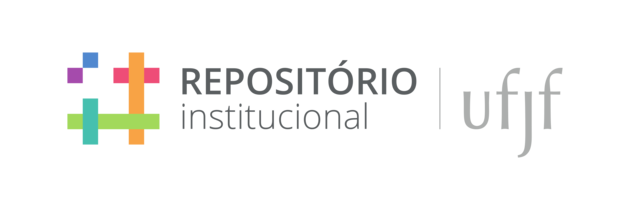https://repositorio.ufjf.br/jspui/handle/ufjf/18426| Arquivo | Descrição | Tamanho | Formato | |
|---|---|---|---|---|
| iagoaugustolimacarvalho.pdf | 400.21 kB | Adobe PDF | Visualizar/Abrir |
| Tipo: | Trabalho de Conclusão de Curso |
| Título: | Impactos dos gastos sociais no combate à pobreza e extrema pobreza: uma análise regional para o período de 2013 a 2021 |
| Autor(es): | Carvalho, Iago Augusto Lima |
| Primeiro Orientador: | Uceli, Amanda Ferrari |
| Membro da banca: | Taveira, Juliana Gonçalves |
| Membro da banca: | Tozei, Nayara Peneda |
| Resumo: | Esta monografia tem como objetivo investigar os fatores que influenciam as taxas de pobreza e extrema pobreza no Brasil, no período de 2013 até 2021, considerando as regiões Norte, Sul, Sudeste, Centro-Oeste e Nordeste. Para isso, foram analisadas variáveis relacionadas a gastos sociais (saúde e saneamento, educação e cultura, segurança), transferências de renda (Programa Bolsa Família), crescimento econômico (Produto Interno Bruto) e desigualdade social (Índice de Gini), obtidas no Atlas do Desenvolvimento Humano no Brasil, no Ipeadata. Os dados foram organizados em uma estrutura de painel, e os modelos pooled, de efeitos fixos e de efeitos aleatórios foram aplicados. A partir disso, há a constatação que o modelo de efeitos fixos foi o mais adequado para analisar a pobreza, segundo os testes F, Breusch-Pagan e Hausman. Os principais resultados apontam que a desigualdade de renda, medida pelo índice de Gini, tem um impacto positivo e significativo sobre a pobreza e a extrema pobreza: um aumento de 1% na desigualdade está associado a um crescimento de 6,489% na extrema pobreza e 5,017% na pobreza, evidenciando a relação entre concentração de renda e vulnerabilidade econômica. Outros resultados relevantes, indicam que o crescimento econômico e os gastos com segurança não foram significativos. Além disso, foram observados resultados não intuitivos, como a associação positiva entre os gastos com saúde e saneamento e as taxas de pobreza e extrema pobreza, sugerindo que um aumento de 1% nesses gastos está relacionado a um crescimento de 0,581% e 0,440% nas respectivas taxas. Os repasses do Programa Bolsa Família tiveram impactos negativos e significativos sobre as taxas de pobreza e extrema pobreza, com um aumento de 1% nos repasses associado a uma redução de 1,319% e 0,854% nessas taxas. Por outro lado, os gastos com educação e cultura apresentaram significância na estimação de extrema pobreza, onde o aumento de 1% nos gastos, está associado a uma redução de 0,789%. Por fim, os efeitos fixos regionais evidenciam desigualdades persistentes, com as regiões Nordeste e Norte registrando os maioresníveis de pobreza, enquanto Sudeste e Centro-Oeste apresentaram os menores, reforçando a importância de estratégias regionais para o enfrentamento da pobreza. |
| Abstract: | This monograph aims to investigate the factors influencing poverty and extreme poverty rates in Brazil from 2013 to 2021, considering the North, South, Southeast, Center-West, and Northeast regions. To this end, variables related to social spending (health and sanitation, education and culture, security), income transfers (Bolsa Família Program), economic growth (Gross Domestic Product), and social inequality (Gini index) were analyzed, obtained from the Atlas of Human Development in Brazil and Ipeadata. The data were organized in a panel structure, and the pooled, fixed effects, and random effects models were applied. Based on this, it was found that the fixed effects model was the most suitable for analyzing poverty, according to the F, Breusch-Pagan, and Hausman tests. The main results indicate that income inequality, measured by the Gini index, has a positive and significant impact on poverty and extreme poverty: a 1% increase in inequality is associated with a 6.489% increase in extreme poverty and a 5.017% increase in poverty, highlighting the relationship between income concentration and economic vulnerability. Other relevant findings indicate that economic growth and security spending were not statistically significant. Additionally, some non-intuitive results were observed, such as the positive association between health and sanitation spending and poverty and extreme poverty rates, suggesting that a 1% increase in these expenditures is related to an increase of 0.581% and 0.440% in extreme poverty and poverty rates, respectively. Bolsa Família transfers had negative and significant impacts on poverty and extreme poverty rates, with a 1% increase in transfers associated with a reduction of 1.319% and 0.854% in these rates. On the other hand, education and culture spending was significant in the estimation of extreme poverty, where a 1% increase in expenditures was associated with a 0.789% reduction. Finally, the regional fixed effects highlight persistent inequalities, with the Northeast and North regions recording the highest levels of poverty, while the Southeast and Center-West regions had the lowest, reinforcing the importance of regional strategies to address poverty. |
| Palavras-chave: | Extrema pobreza Pobreza Desigualdade social Gastos governamentais Extreme poverty Poverty Social inequality Government spending |
| CNPq: | CNPQ::CIENCIAS SOCIAIS APLICADAS::ECONOMIA |
| Idioma: | por |
| País: | Brasil |
| Editor: | Universidade Federal de Juiz de Fora - Campus Avançado de Governador Valadares |
| Sigla da Instituição: | UFJF/GV |
| Departamento: | ICSA - Instituto Ciências Sociais Aplicadas |
| Tipo de Acesso: | Acesso Aberto Attribution-NoDerivs 3.0 Brazil |
| Licenças Creative Commons: | http://creativecommons.org/licenses/by-nd/3.0/br/ |
| URI: | https://repositorio.ufjf.br/jspui/handle/ufjf/18426 |
| Data do documento: | 10-Mar-2025 |
| Aparece nas coleções: | Ciências Econômicas - Campus GV |
Este item está licenciado sob uma Licença Creative Commons

